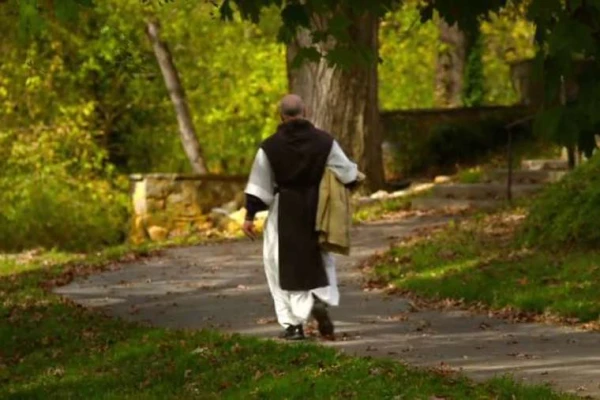
CNA Newsroom, Dec 15, 2023 / 09:20 am (CNA).
A leading Catholic moral theologian this week offered insight into the Vatican’s newest guidance on the handling of cremated remains, noting that Church teaching on “reverence for the body” must still be at the center of any decisions related to a loved one’s ashes.
The Vatican’s Dicastery for the Doctrine of the Faith said in recent guidance that it may be permissible for a Catholic to keep a small portion of a deceased loved one’s ashes in a personal place of significance if some conditions are met.
The office also said that it is permissible for the commingled ashes of deceased and baptized persons to be set aside in a permanent sacred place if the names of the persons are indicated so as to not lose memory of them.
Father Thomas Petri, president of the Pontifical Faculty of the Immaculate Conception as well as a moral theologian, said on “EWTN News Nightly” that, historically, cremation “was always considered a problem because it has pagan tendencies.”
“There were pagan rituals attached to cremation, especially with the practice of scattering ashes,” he told EWTN anchorwoman Tracy Sabol. But a few decades ago the Church began to revise its guidance on the matter, he noted.
“Because cremation is inexpensive or less expensive, often, than burial of the body, and because in many places around the world there’s a shortage of cemetery space, the Church said that cremation can be allowed, and can be done, provided that the cremated remains of the person are preserved in a sacred space,” Petri explained.
Petri noted that the Church’s latest guidance sought to answer “whether or not it is possible to mingle multiple cremated remains together as long as they’re kept in a sacred space.”
“The Vatican office said this is possible as long as, of course, it’s kept in a sacred space and that the names of who is mingled there [are written],” he said.
“The concern that our remains are being mingled and that’s somehow going to deter the resurrection of the body at the end, of course, is a theological question,” he noted. “The Vatican dicastery said the resurrection is part of God’s power. Even when you have a body that’s been buried for a thousand years and practically nothing is left, God still can resurrect that body and make it glorious.”
Also addressed by the dicastery, Petri said, was “whether or not the faithful, in that situation, could keep a portion of the remains of their loved ones separate to have them distinguished, and have it placed in some place of personal significance.”
“And the Vatican office said yes, but it also has to be a sacred space,” the priest said. “So the Vatican is still insisting that any cremated remains still have to be preserved in a sacred space.”
“We can’t have urns of, say, your mother or your grandmother being placed on the mantle in your house, which a lot of people want to do,” he said. “But that’s just not the Christian practice.”
Asked by Sabol how the Church might respond to those who wish to keep loved one’s remains in such places, Petri said it would be necessary to emphasize “the importance and reverence for the body, the deceased body.”
“The body is the temple of the Holy Spirit,” Petri said. “Even when it disintegrates over hundreds and hundreds of years in the ground, or even when it is cremated. We have to be careful not to reduce the importance of the body, even cremated remains, [or] to somehow commercialize them, or make [the body] a trinket of remembrance.”
It is necessary to have the remains “in a sacred space where prayer, where reverence is possible … rather than simply on a shelf in one’s home or on one’s mantle,” Petri concluded.
If you value the news and views Catholic World Report provides, please consider donating to support our efforts. Your contribution will help us continue to make CWR available to all readers worldwide for free, without a subscription. Thank you for your generosity!
Click here for more information on donating to CWR. Click here to sign up for our newsletter.





Leave a Reply